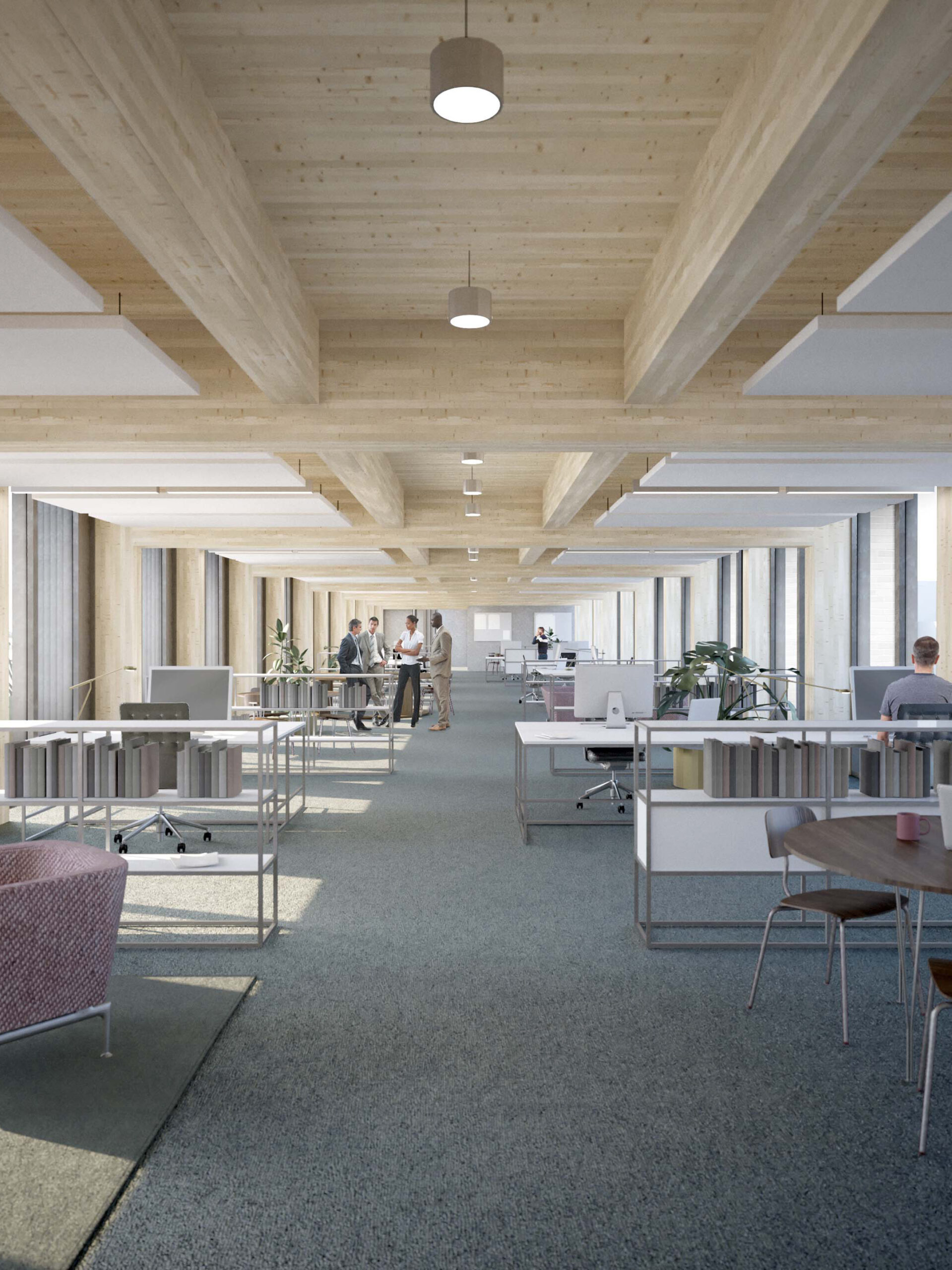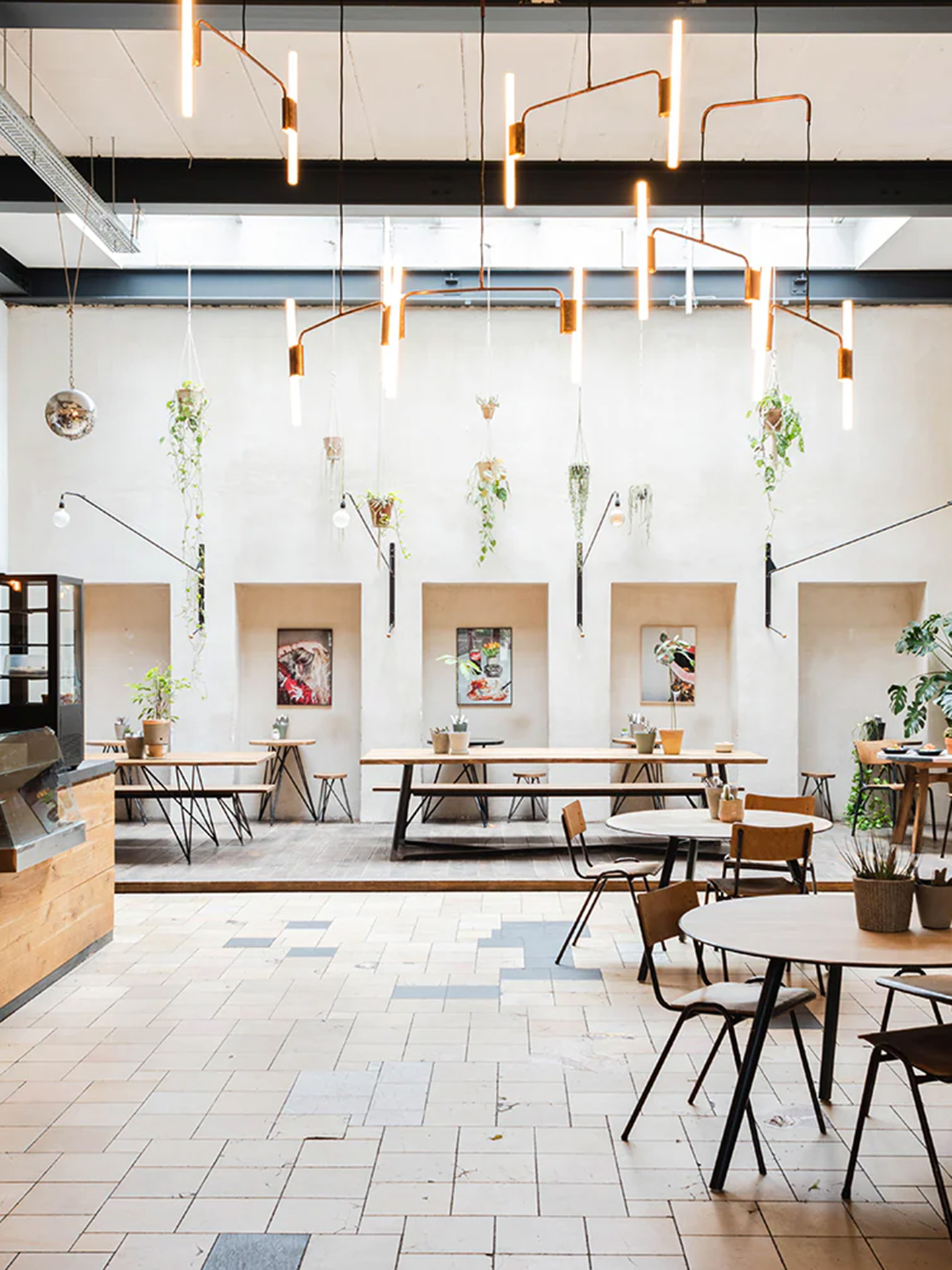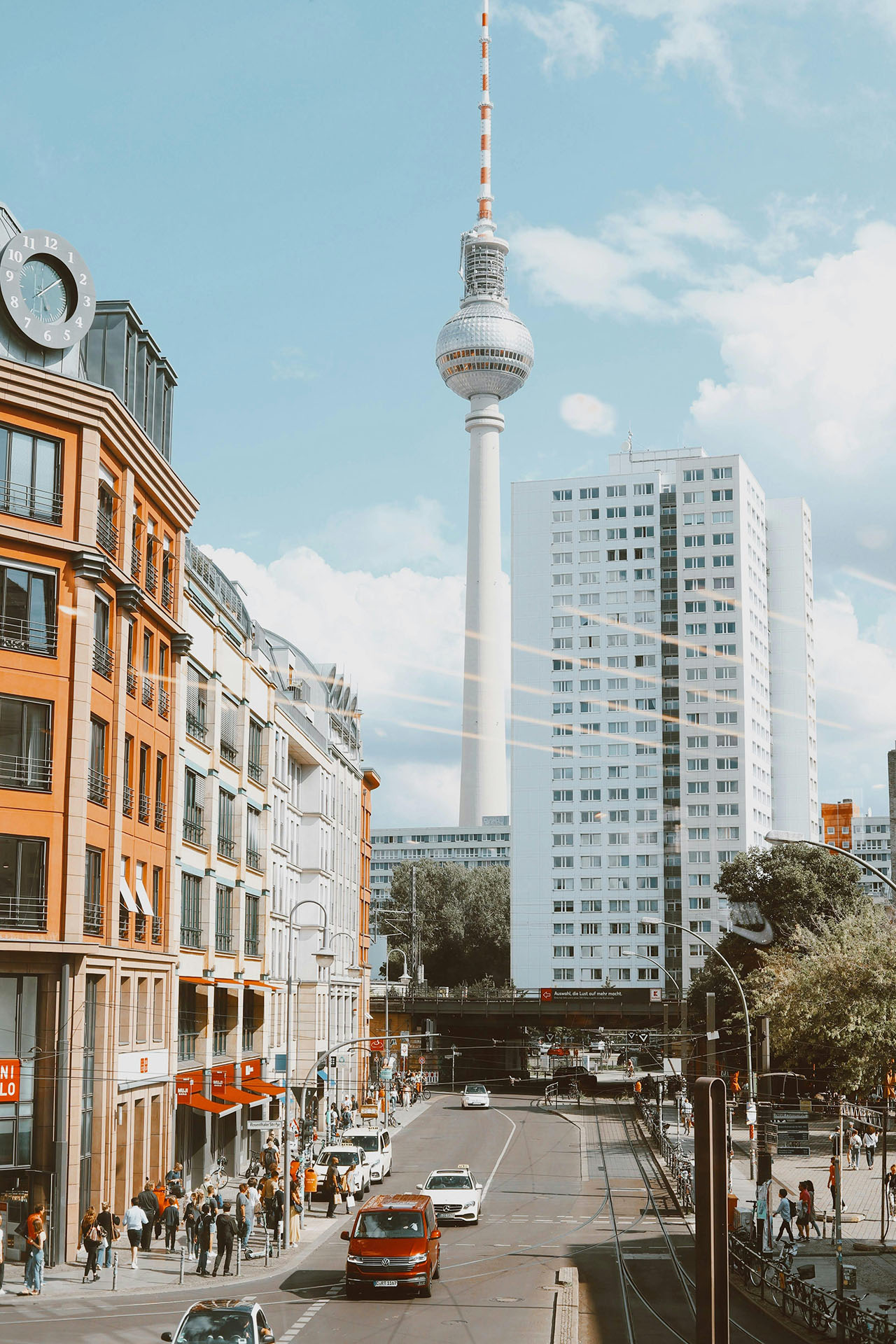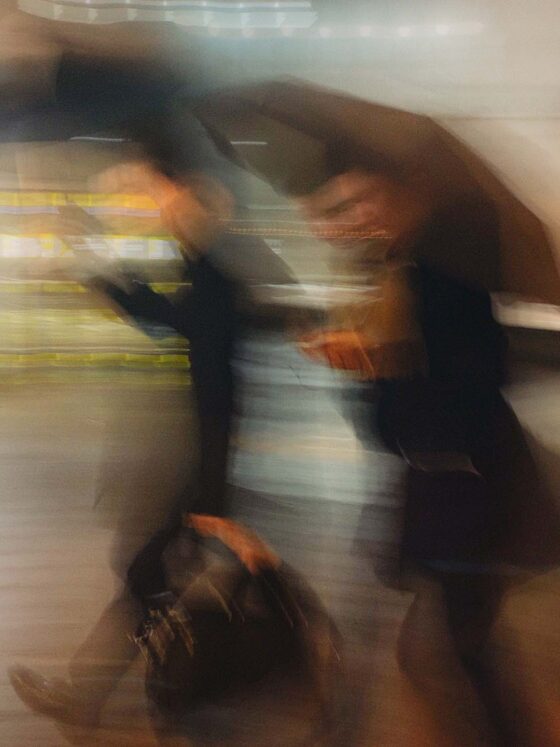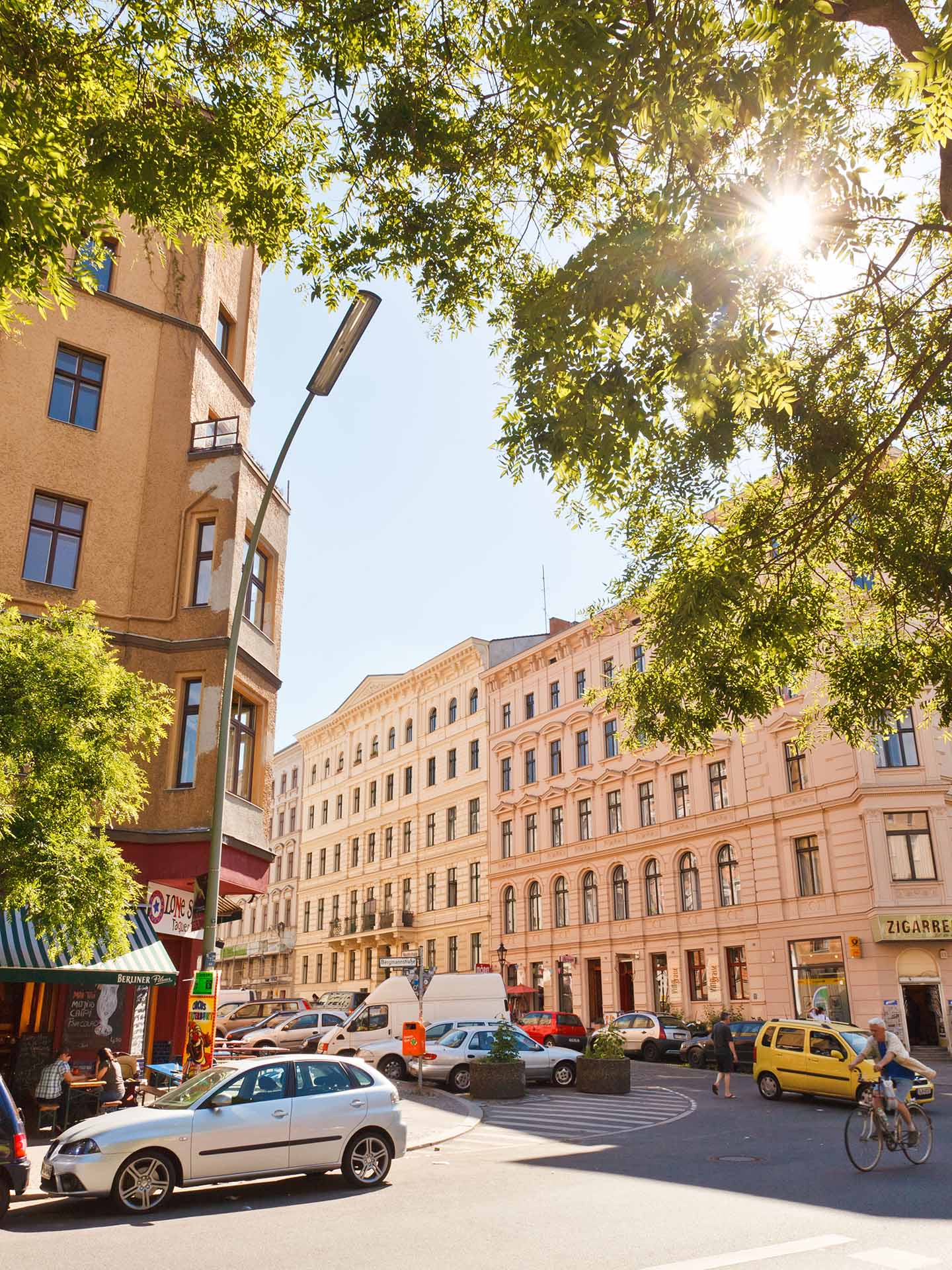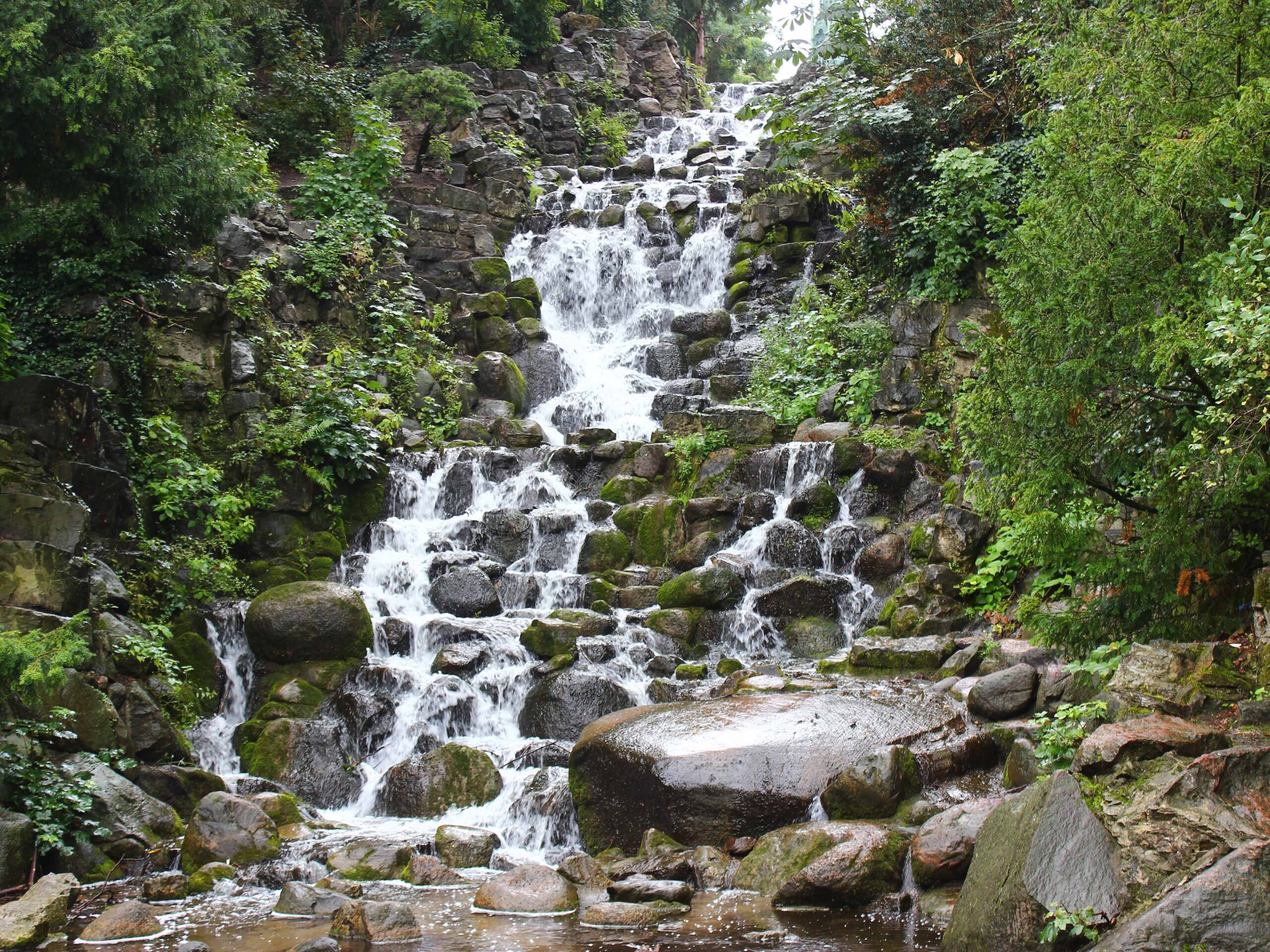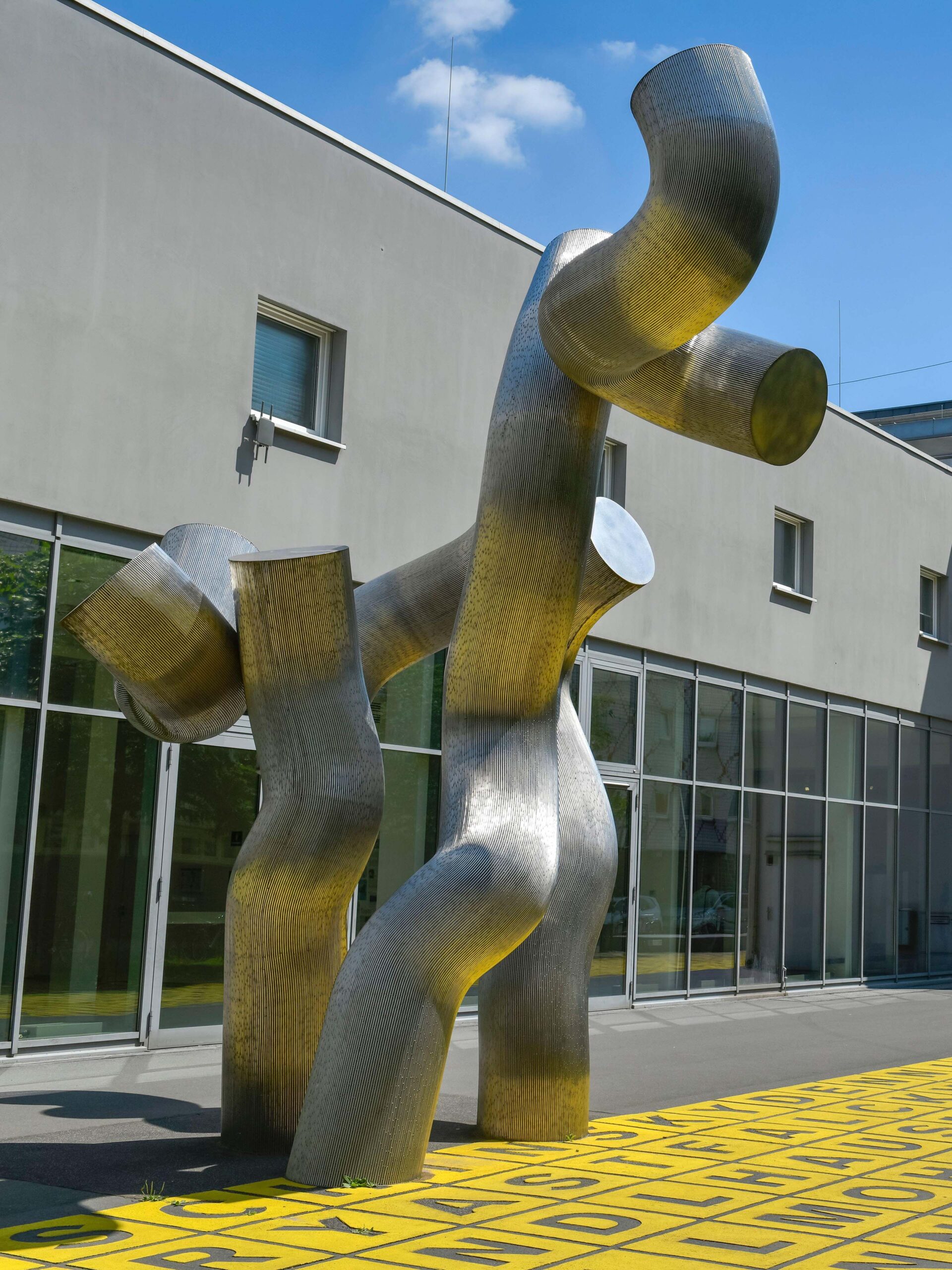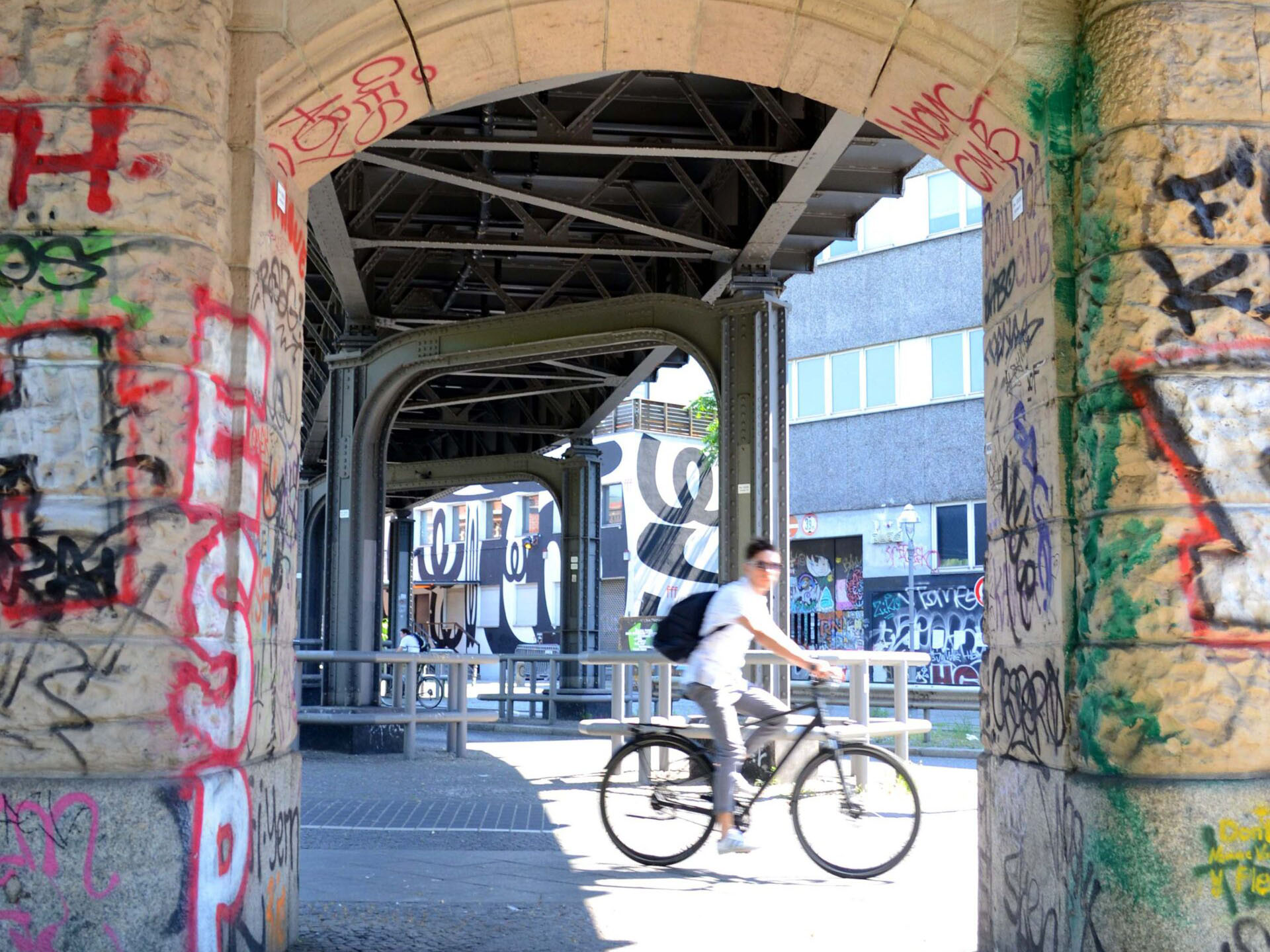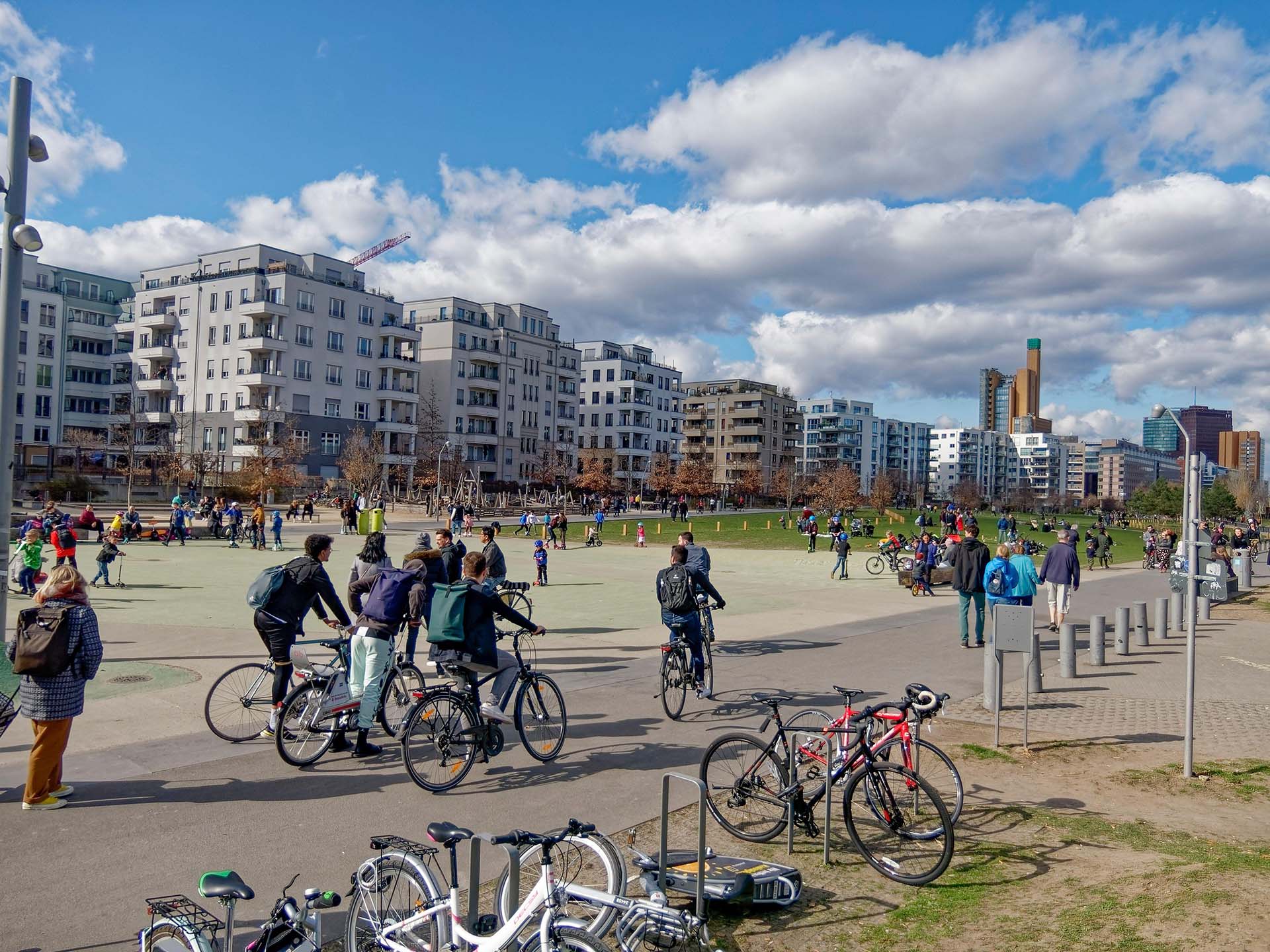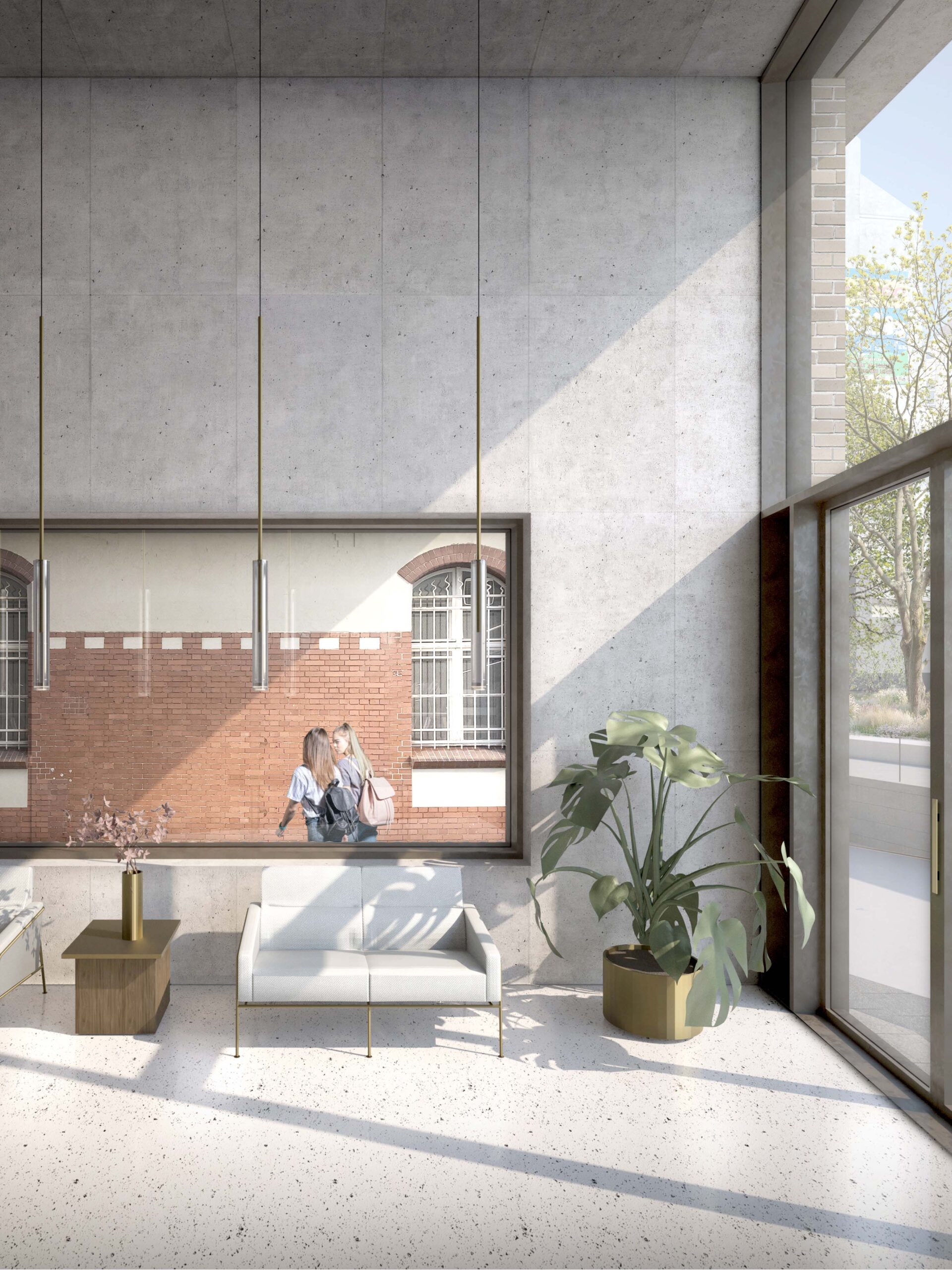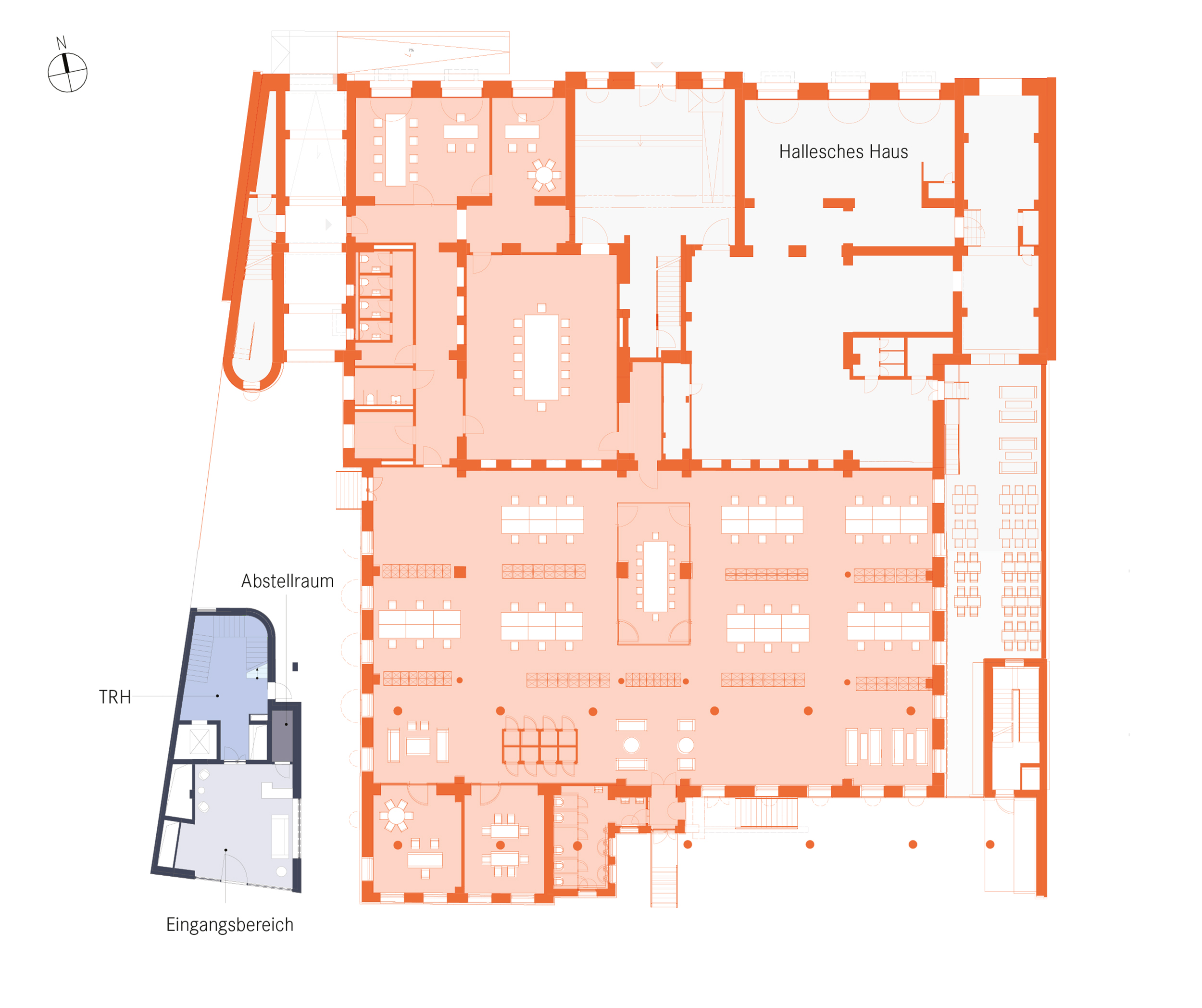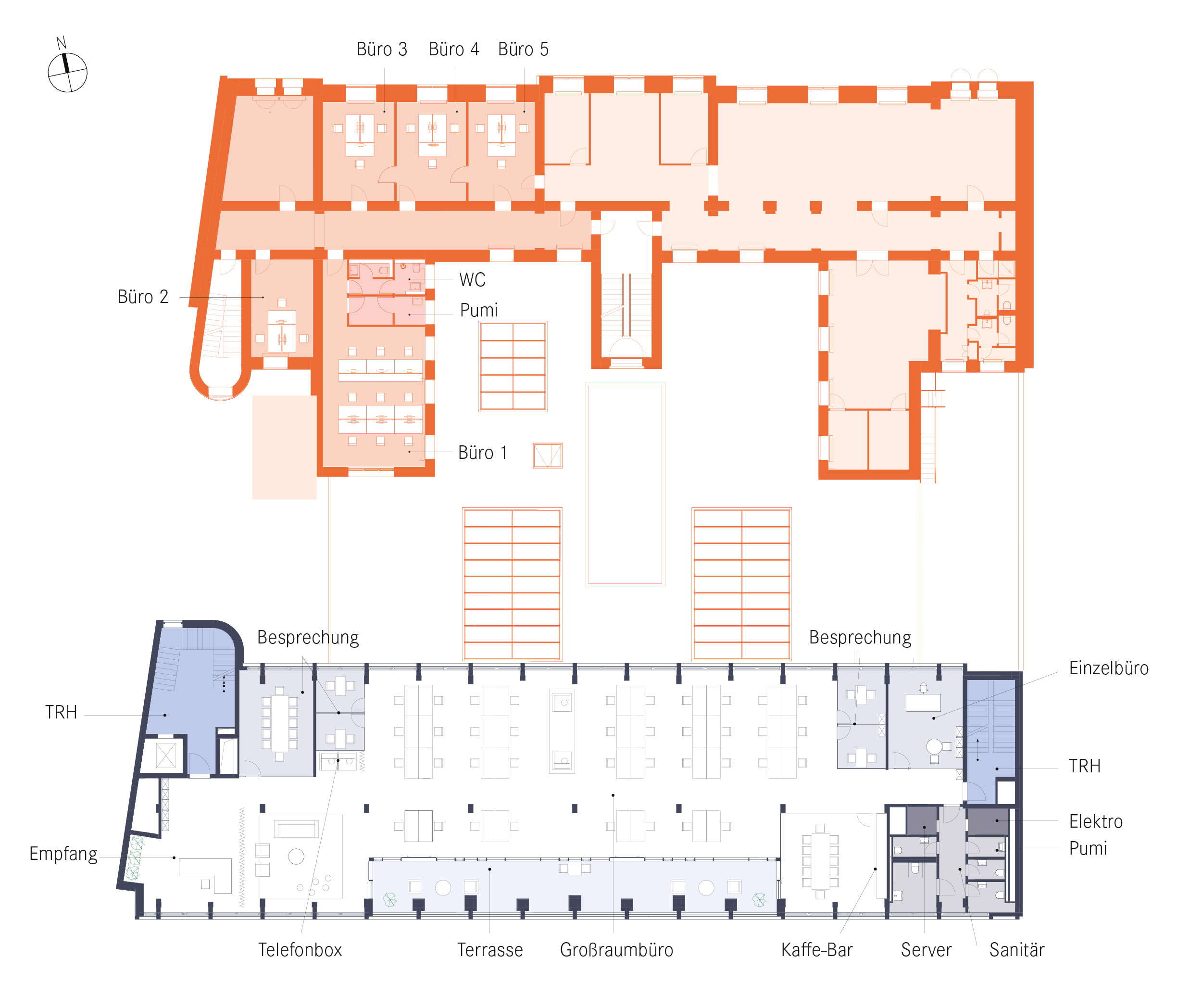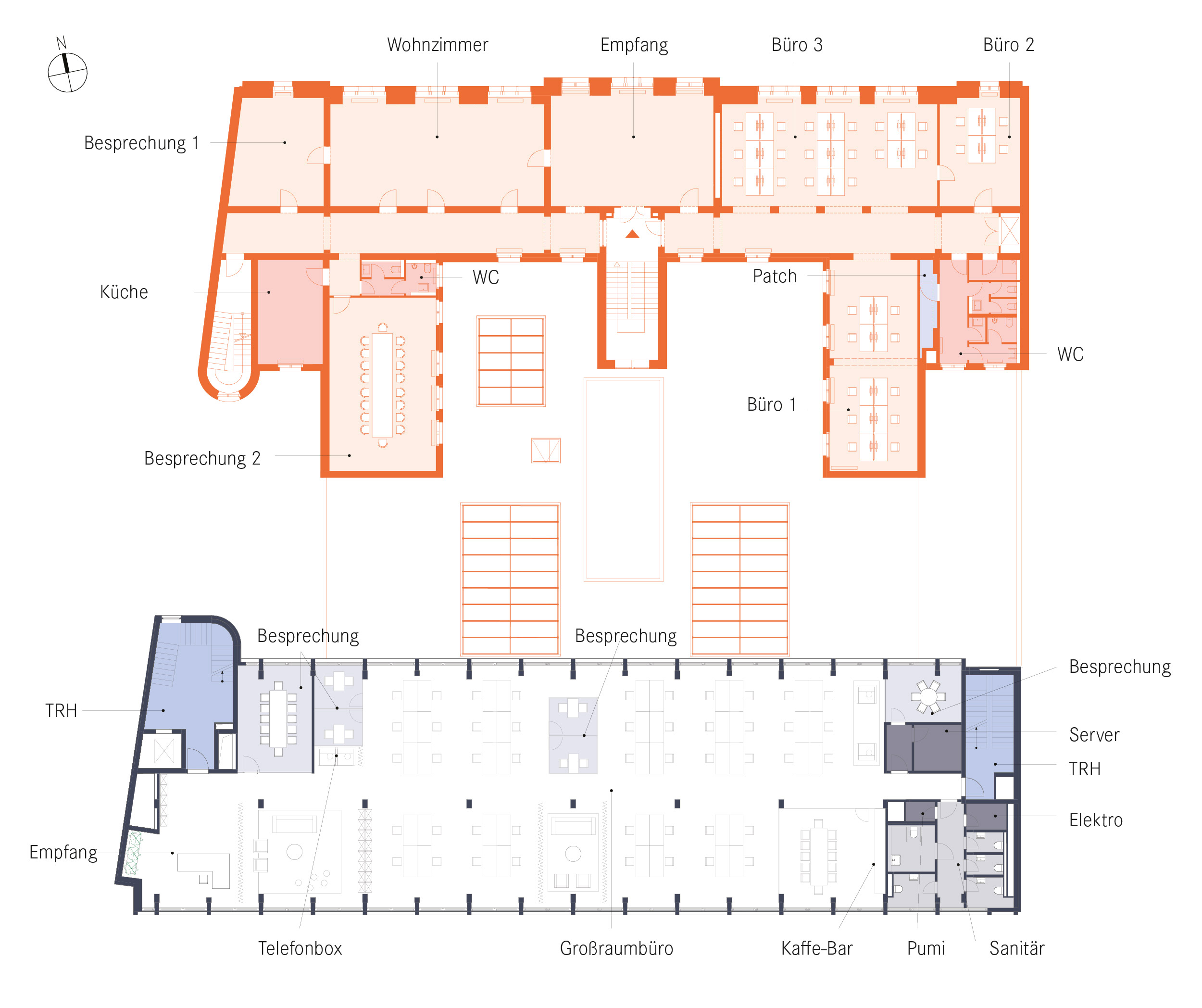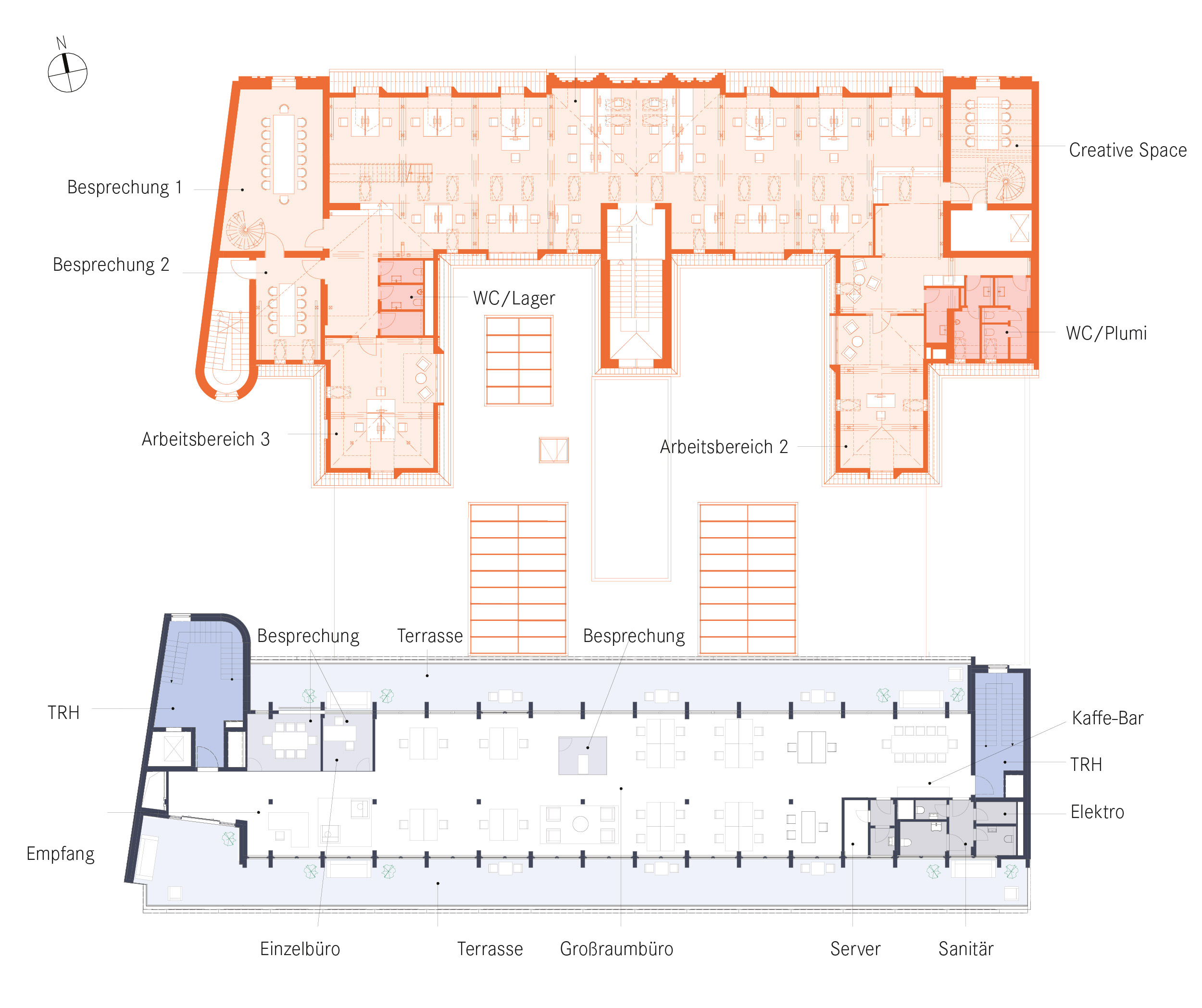A landmark of
unique quality
Time has never stood still at DENKMAL on Tempelhofer Ufer 1 in Kreuzberg, Berlin, and the story begins here where the post office SW61 was built in 1901. With its unmistakable character and the beauty of its listed brick Gothic architecture, DENKMAL has survived the test of time – and continues to reinvent itself. DENKMAL is redefining itself in the center of a district where history and modernity merge in a fascinating way: in Kreuzberg, Berlin – a district in transition that demonstrates how brownfield land can be revived and put to modern use.
Existing buildings of value are preserved and new ones are added to create a vibrant urban landscape with healthy living and working environments for generations to come. This coming together of old and new hold true for DENKMAL’s future as well: the historic post office will be preserved, but it will also evolve. Where once millions of letters started their journey into the world and countless people came and went every day, sustainability and modern working environments are coming to life. In this light, the landmark building is once again asserting its significant and innovative strength in Berlin’s dynamically developing urban landscape.
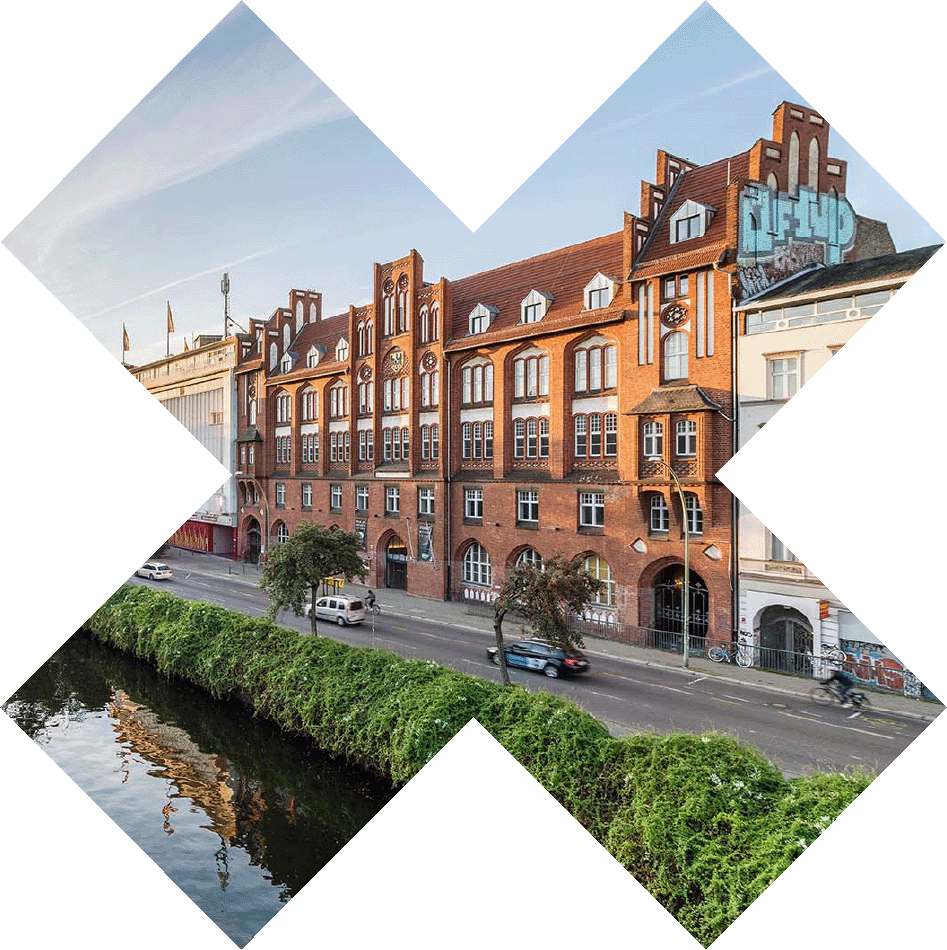
A landmark of
unique quality
Time has never stood still at DENKMAL on Tempelhofer Ufer 1 in Kreuzberg, Berlin: it was at this site that the post office SW61 was built on in 1901. With its unmistakable character and the beauty of its listed brick Gothic architecture, DENKMAL has survived the test of time – and continues to reinvent itself. DENKMAL is redefining itself in the center of a district where history and modernity merge in a fascinating way: in Kreuzberg, Berlin – a district in transition that demonstrates how brownfield land can be revived and put to modern use.
Existing buildings of value are preserved and new ones are added to create a vibrant urban landscape with healthy living and working environments for generations to come. This coming together of old and new hold true for DENKMAL’s future as well: the historic post office will be preserved, but it will also evolve. Where once millions of letters started their journey intot he world and countless people came and went every day, sustainability and modern working environments are coming to life. In this light, the landmark building is once again asserting its significant and innovative strength in Berlin’s dynamically developing urban landscape.

ICK STEH’ UF BERLIN XBERG // * – IDEAL
Berlin
Change, development and growth
Berlin, a city in constant flux, is a testament to the positive outcomes of perpetual change. Its capacity for growth and innovation, coupled with its diverse architectural heritage spanning centuries and a populace of 3.7 million from 190 nations, creates a captivating atmosphere that attracts businesses and makes it one of Europe’s most important economic regions. Consequently, Berlin has emerged as Germany’s premier startup hub and a pivotal center for technology, welcoming creative industries, startups, and multinational corporations alike.
Remarkably, amidst economic challenges, including crises and conflicts, Berlin’s GDP surged by 4.9% in real terms in 2022, surpassing the national average growth rate. Beyond its strategic geographical position and outstanding infrastructure, Berlin offers an enviable quality of life and a rich cultural and educational landscape. Renowned universities, a plethora of museums and theaters, and globally acclaimed events such as the Berlinale underscore its cultural prominence. Berlin’s allure extends beyond formal institutions and events; it embodies culture in its essence. With its parks, rivers, neighborhoods, and historical landmarks, Berlin is akin to a living museum, constantly inviting exploration and discovery.
Kreuzberg
– A neighborhood in transition
Kreuzberg has a reputation to uphold. Not only is it one of Berlin’s oldest and most centrally located districts, it also embodies much of what people cherish about the city: vibrant neighborhoods, a flourishing art scene, dynamic nightlife, green spaces offering ample recreational opportunities, and a diverse infrastructure that is far from mundane. Here, the famed contrasts inherent of a bustling city – which cannot be contrived on the drawing board – converge seamlessly. These elements form the essence of Kreuzberg, continually surprising and enchanting with its blend of contemporary architecture alongside refurbished buildings, much like the old post office – a striking emblem symbolizing the innovation and rejuvenation of existing structures.
In Kreuzberg, signs of renewal are ubiquitous: the Hallesche and Tempelhofer Ufer are to undergo comprehensive redesigns, with certain riverbank areas set to become partially car-free. Green spaces tailored for strollers, children, dog-walkers, and sports enthusiasts are in the works. The “Park am Gleisdreieck,” mere minutes away from DENKMAL, spans approximately 31.5 hectares of lush leisure grounds, evolving from once-overgrown wasteland nestled between Kreuzberg and Schöneberg. Following suit is the “Urbane Mitte Am Gleisdreieck,” a forthcoming urban enclave just a short stroll from DENKMAL which is to be completed by 2029. Envisioned as a bustling quarter comprising existing and new structures, it will feature a medley of offices, commercial spaces, eateries, retail outlets, artisanal workshops, hotels, and venues for art and culture. Much like the landmark building itself, it will serve as a catalyst for fostering a forward-looking urban culture.
Urban location for short distances
and many destinations
Everything is within close proximity to DENKMAL: Potsdamer Platz, the governmental quarter, Brandenburg Gate, Unter den Linden, Oberbaumbrücke, Spree, and the East Side Gallery are just a few subway stops or a short bike ride away. The subway station Hallesches Tor is just a few walking minutes away as DENKMAL is situated directly across the Landwehrkanal. Accessible via subway lines U1, U3 and U6, Hallesches Tor quickly connects commuters to the western and eastern districts of Berlin, as well as to the central railway station, and the Tegel and BER airports.
SUSTAINABLE!
CREATIVE!
INNOVATIVE!
XBERG
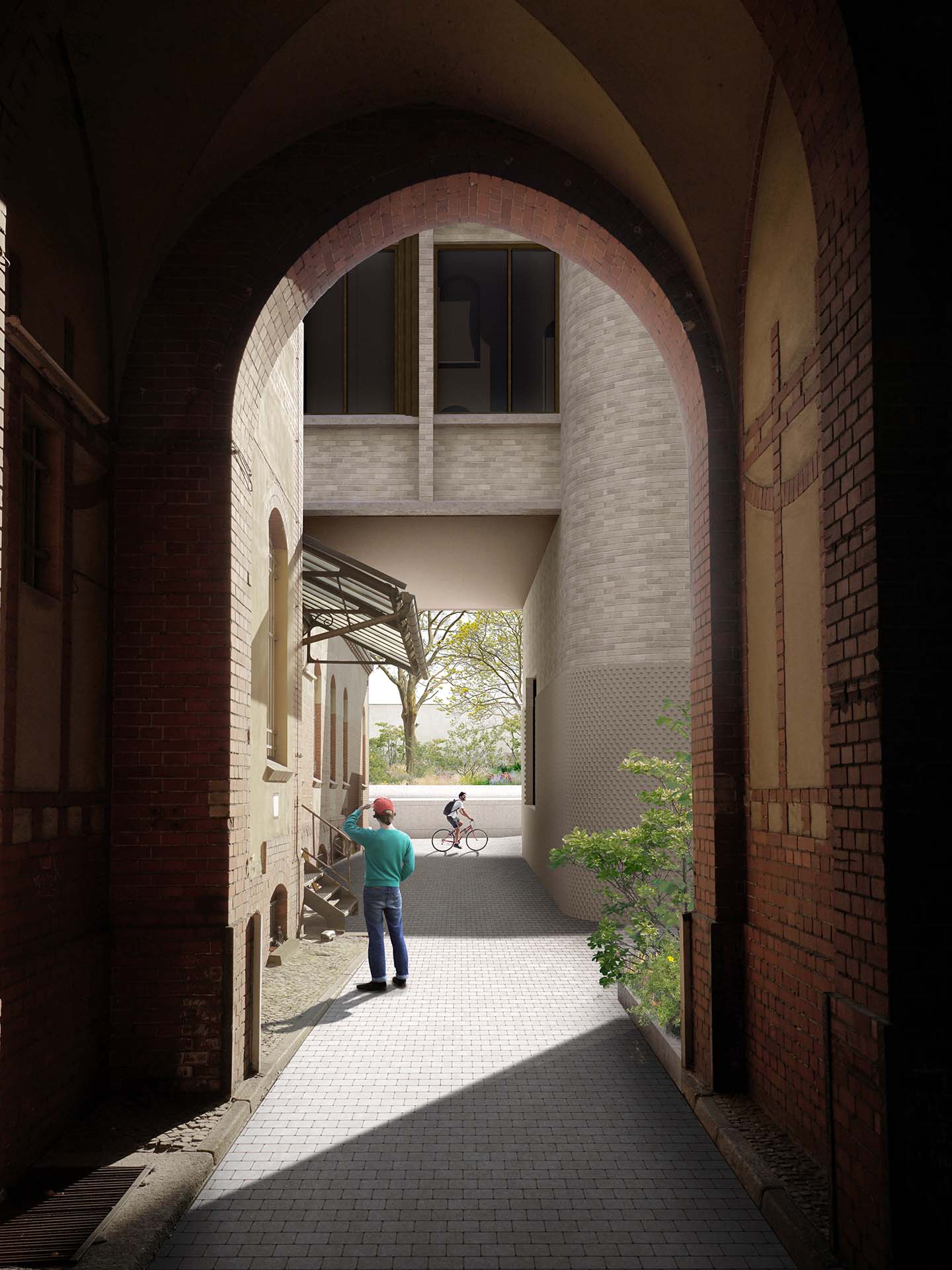
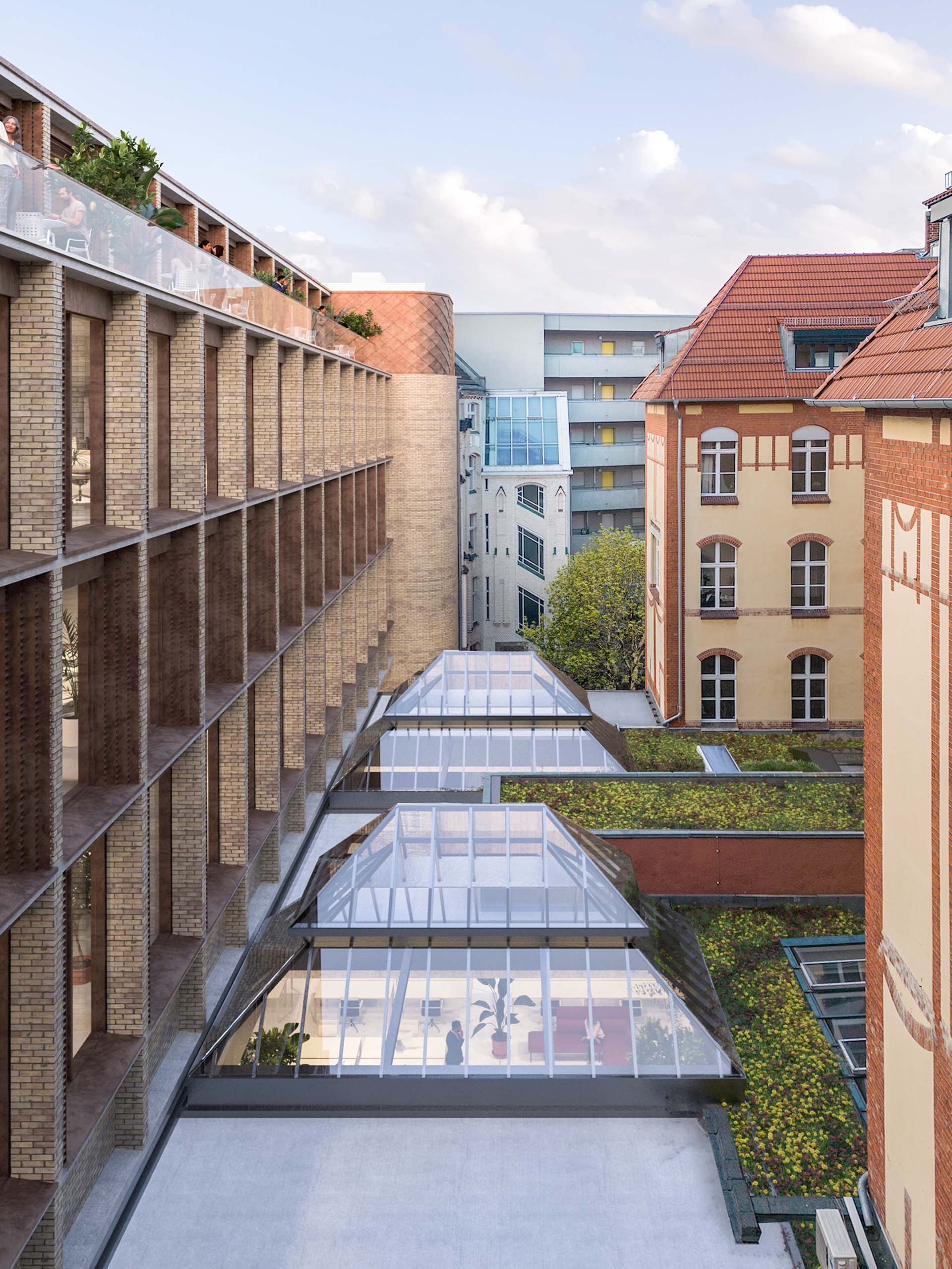
HISTORY MEETS MODERNITY
* – FIND’ ICK JUT.
Landmark buildings are like guardians of memory, acting as mnemonic devices and embodying significant cultural heritage that must be treasured, maintained, preserved, and safeguarded for future generations. Take, for instance, the historic post office at Tempelhofer Ufer 1, also known as SW61 or Südwest 61, named after the western part of Kreuzberg. Constructed around the turn of the century following the designs of post office architect Hermann Struve (1857-1916), this building boasts distinctive features such as gable designs, variously shaped windows, red clinker brickwork, white plaster motifs, pointed arch openings reminiscent of late medieval town hall structures, and a towering pitched roof with stepped gables. It stands as a striking focal point and a magnificent jewel within its architectural surroundings.
Now, 122 years and approximately five generations later, the needs and expectations for buildings have evolved. As a result, the valuable 4000 square meters of real estate are being revitalized to meet modern workspace demands. The energy-efficient refurbishment of the historic portion of the building prioritizes minimal intervention while significantly enhancing heat retention in winter and heat reduction in summer. Measures to maximize natural daylight penetration are carefully implemented, along with improvements to natural ventilation and sun protection. The objective is to attain BREEAM certification for existing buildings, merging history with innovation. Following the meticulous redesign and contemporary furnishing of the premises, the building will offer workspaces infused with early 20th century ambiance. Its expansive rental units are ideally suited for open-plan layouts in an industrial loft style, customizable to meet tenant specifications.
FACTS & FIGURES
Tempelhofer Ufer 1
10961 Berlin
Kreuzberg
1900 – 1901
Hermann Struve
4
Monument
BREEAM
As inviting, energy-efficient, social
and mobile as possible
